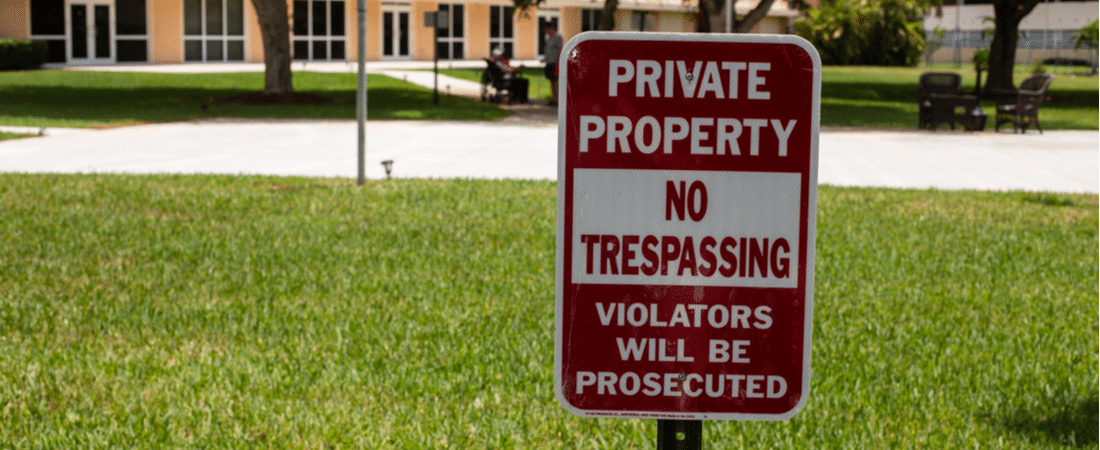Why condo associations put up private property signs. This reader’s condo might put up private property signs and they’re wondering what it implies.
Q: If our condo association posts “private property” signs, are there any implications?
A: We’re not sure what you mean by “implications.” Your condo association, like any other private property owner has the right to post signs on their own property to indicate that it’s their own private property. Frequently, property owners will place those signs to make sure that people that walk onto the property know that they have come onto someone else’s land. These signs may take the form of a simple notice saying “private property” or they may have the name of the association as the owner.
Over time when people use a walkway, sitting area or play area or other type of open space, that continued use may give rise to a claim by the public that the space should be maintained for the public benefit and can no longer remain private. To avoid losing any property rights, a property owner will place private property signage in the area.
You can imagine a situation where a homeowner’s association has a playset for use by the association owners. Over time, people from the neighborhood come and use the playset. Years go by and the play area becomes part of the community. Then, out of nowhere, the association wants to keep non-owners out of the play area, perhaps because of an insurance issue. It’s at this point that the non-owners claim a right to use the play set area.
Why Condo Associations Put Up Private Property Signs
To avoid this situation, and any legal actions that must be defended in court, the association can post notices to indicate that the area is owned by the association. They may also post rules as to who may use the play area, at what hours and under what circumstances, and the notification that these rules will be enforced. By preserving their rights to control the area, the association maintains what it owns and keeps the property rights that it has.
Having said that, the association may not lose ownership of an area if they don’t place those signs, but they may lose some rights to control the area or restrict access to the area. We suspect the association talked to an attorney about some issue that may have occurred on the grounds of the association and that attorney recommended that they place the private property signs.
That signage doesn’t have to strictly say “private property.” The signage can also identify the association by name along with contact information or any other information to identify the area as owned by the association.
It generally takes time for the public to obtain rights to use private property. It won’t happen overnight. If the public use of the private property occurs over for decades without interruption, then you might have an issue. Once the community starts believing that something is there for public use, a private owner should be concerned about whether it has lost some or all of its right to control the property.
More on Topics Related to Condo Associations and Rules and Regulations
Changing the Percentage of Ownership in a Condo Association
Enforcing No Smoking Rules in Condos
What Happens When HOA Rules Aren’t Enforced?
What Can You Do About a Nightmare Condo Owner?







Leave A Comment